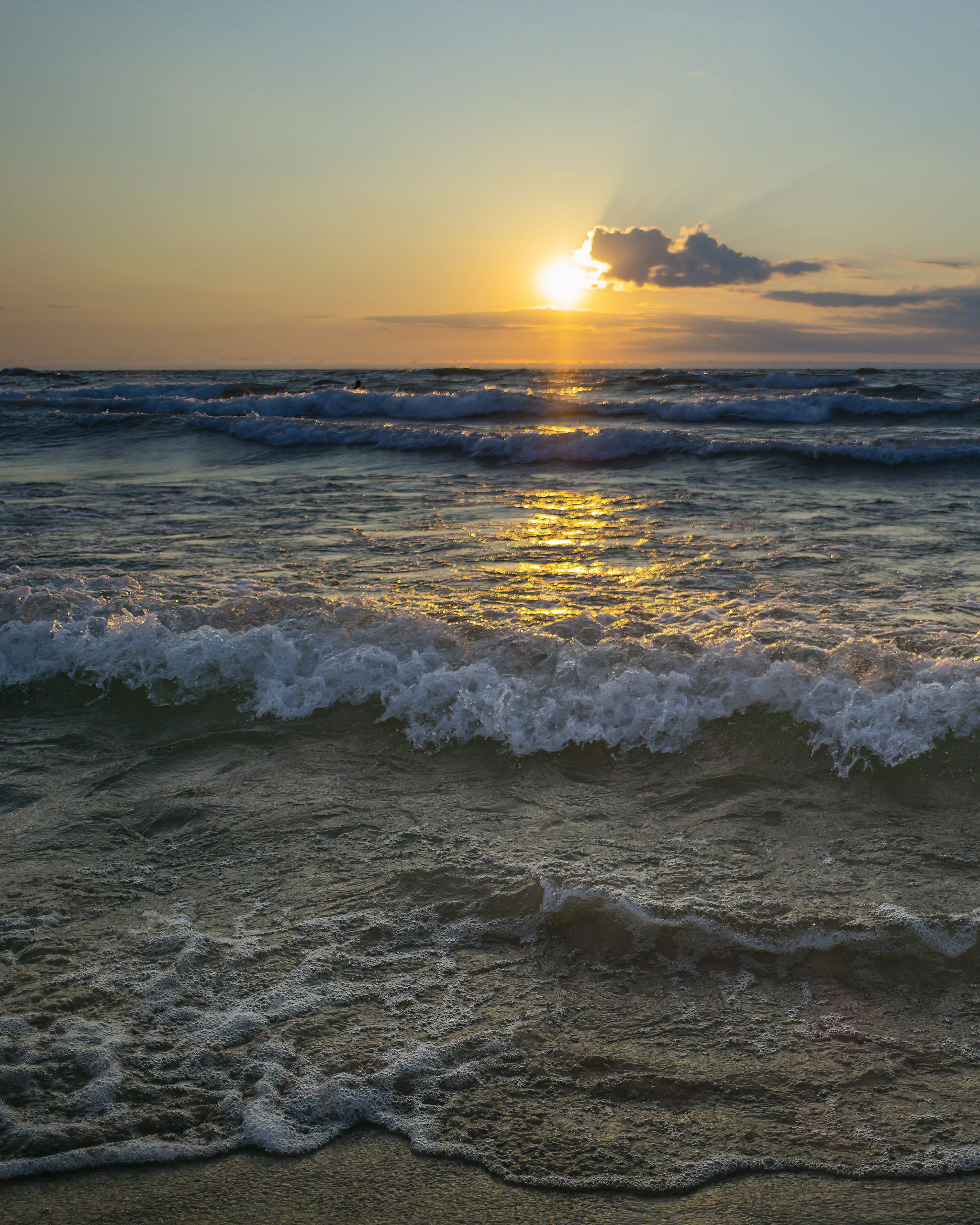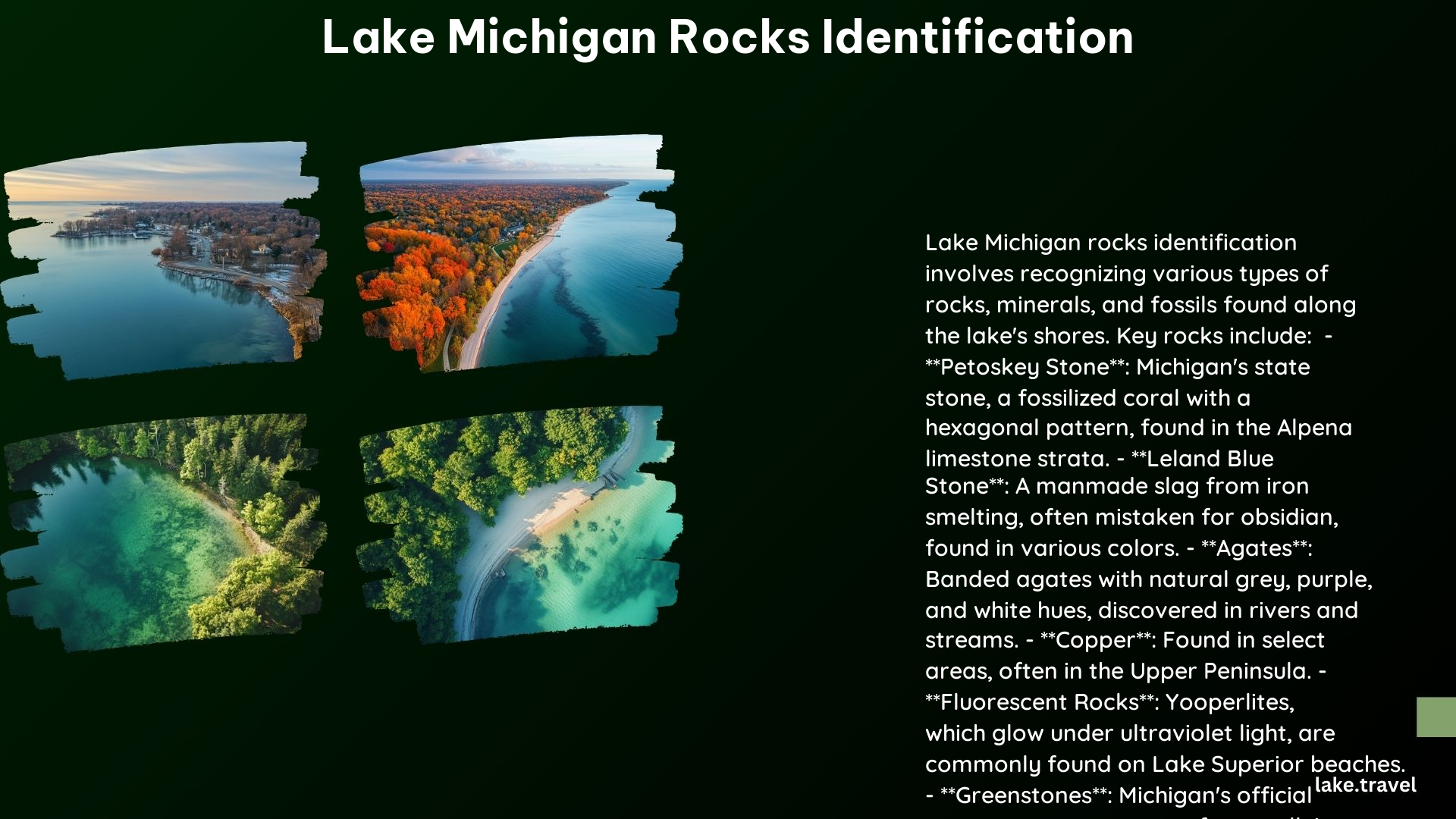Lake Michigan is a treasure trove of diverse and fascinating rock formations, each with its unique characteristics and history. Whether you’re a seasoned rockhound or a curious explorer, understanding the different types of rocks found on Lake Michigan’s beaches can enhance your lakeside adventures. In this comprehensive guide, we’ll explore the most common rock and mineral varieties that can be discovered along the shores of this Great Lake.
Identifying the Rocks of Lake Michigan

- Basalt: A common volcanic rock found in various shades of gray, often with a smooth, rounded surface due to wave action and wind polishing.
- Septarian: Brown stones with unique patterns, found in a narrow stretch of the Lake Michigan shoreline.
- Geodes: Hollow rocks filled with crystals, often found in the southern part of Lake Michigan.
- Chalcedony: A type of cryptocrystalline quartz, often found in various colors and patterns.
- Agate: Banded agates with natural grey, purple, and white hues can be discovered in rivers and streams throughout Michigan.
- Petoskey Stones: Michigan’s state stone, a fossilized coral with a striking hexagonal pattern, commonly found along Lake Michigan beaches.
- Leland Blue Stone: A slag byproduct of iron smelting, found in various colors including purple, gray, and shades of green.
- Fluorescent Rocks: Rocks that glow under ultraviolet light, such as Yooperlite, which contains sodalite and is commonly found on Lake Superior beaches.
- Greenstones: Michigan’s official state gemstone, a type of pumpellyite mineral found in the cavities of basaltic lava, often polished to reveal a sparkling green-blue shade.
- Pudding Stones: A type of conglomerate rock containing fragments of minerals like jasper.
- Copper: Found in select areas of Michigan, often in the Upper Peninsula.
Steps to Identify Lake Michigan Rocks

- Observe the Color and Pattern: Note the color, pattern, and texture of the rock. Different rocks have distinct characteristics, such as the hexagonal pattern of Petoskey stones or the banded patterns of agates.
- Research the Area: Familiarize yourself with the types of rocks commonly found in the area you are visiting. This will help you narrow down the possibilities.
- Use Field Guides: Consult field guides or online resources to compare your finds with known examples of different rocks and minerals.
- Examine the Rock’s Surface: Look for signs of weathering, such as smoothness or holes, which can indicate the rock’s origin and history.
- Consult with Experts: Join rockhounding communities or consult with local experts to get a more accurate identification of your finds.
Best Beaches for Rockhounding on Lake Michigan
- Pier Cove Beach: Known for its variety of rocks, including basalt, septarian, and geodes.
- Sleeping Bear Dunes National Lakeshore: A popular spot for finding Petoskey stones and other rocks.
- Pictured Rocks National Lakeshore: Known for its multicolor rocks and diverse geological formations.
- Rockport: A good spot for finding rocks and minerals, including agates and copper.
Tips for Rockhounding on Lake Michigan
- Wear Comfortable Clothing: Dress in layers and wear sturdy shoes to ensure a comfortable and successful rockhounding experience.
- Bring a Bag or Bucket: Collect your finds in a container to examine them later.
- Research the Area: Familiarize yourself with the types of rocks commonly found in the area you are visiting.
- Have Patience: Rockhounding can be a slow and meticulous process, so be prepared to spend time searching and examining rocks.
- Respect Private Property: Ensure you have permission to rockhound on private property, and respect any posted signs or restrictions.
By understanding the diverse rock formations found on Lake Michigan’s beaches, you can enhance your lakeside adventures and discover the hidden gems that make this Great Lake so unique. Happy rockhounding!
